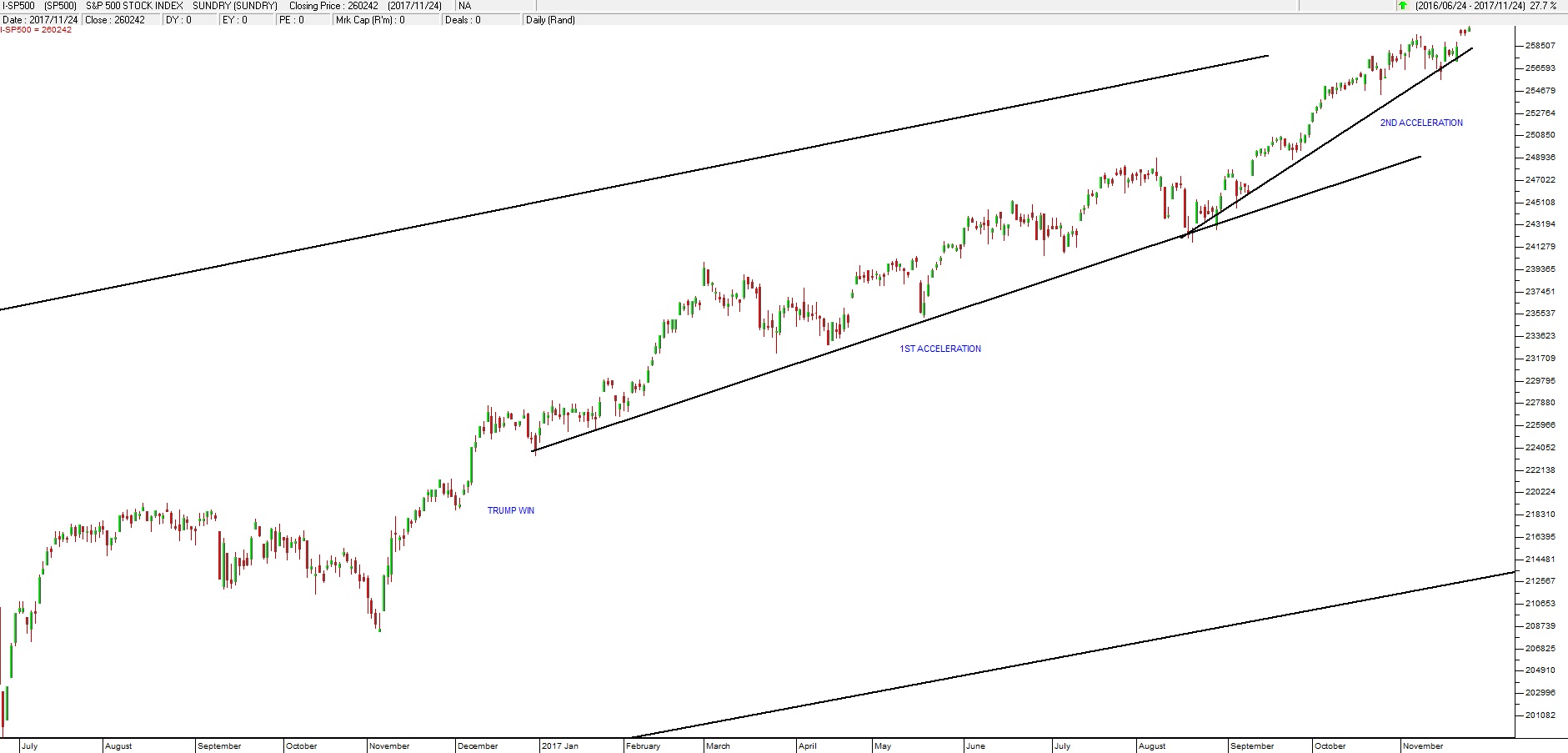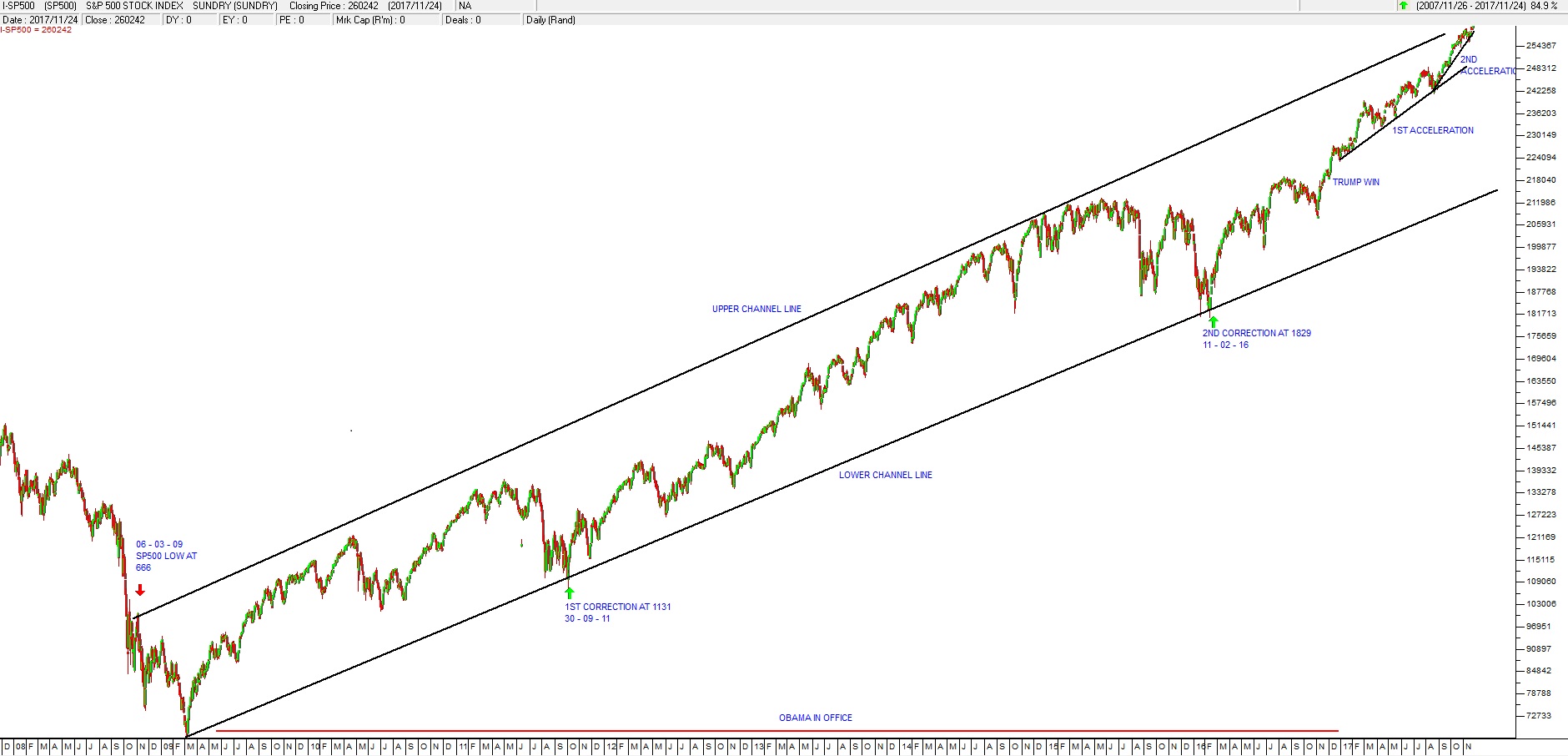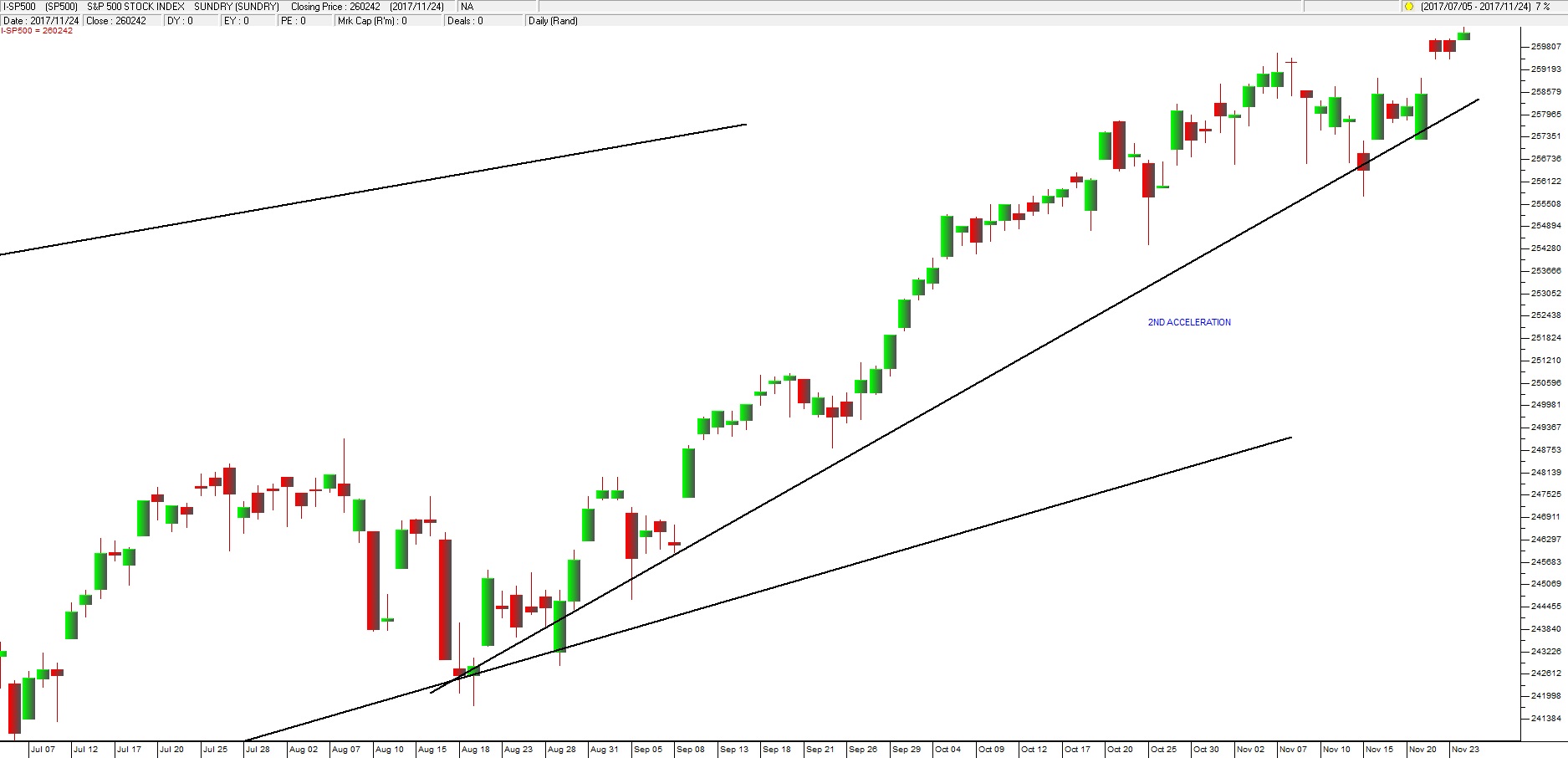S&P500 over 2600
The progress of the S&P500 index has been remarkable. On Friday, during the short Thanksgiving Day trading session it closed above 2600 for the first time ever. Investors have been buoyed up by the strong gains in corporate profits over the past few quarters and anticipate further good results in 2018. Consider the chart:


S&P500 Index June 2017 to November 2017 - Chart by ShareFriend Pro
(click to enlarge image)
This chart shows the S&P over the past 5 months. The diagonal line across the top left-hand corner is the long-term upper channel line which we will consider in more detail below. As you can see the trend has accelerated since mid-August in what we describe as the “2nd acceleration”. The meaning of this becomes clear in the second chart below:
S&P500 Index July 2016 to November 2017 - Chart by ShareFriend Pro
(click to enlarge image)
Here you can see the S&P over the past 22 months, since the second correction on 11-2-2016. Now the first acceleration which began in December 2016 becomes clear and it is possible to see the upper and lower long-term channel lines. We have also marked the win by Trump in November 2016. Finally, let us consider a chart of the entire bull trend since its commencement nearly a decade ago:
S&P500 Index 2008 to 2017 - Chart by ShareFriend Pro
(click to enlarge image)
Now you can see the full context of the bull trend from its inception. It has been moving between clear upper and lower channel lines. You can see the two major corrections on 30-9-2011 and then again on 11-2-2016. At the bottom of the chart we have included a horizontal line (in red) that shows Obama’s term of office and that indicates that this bull trend has little or nothing to do with Trump and his proposed tax reforms. The bull trend has been driven by three primary causes:- The drop in energy prices since the middle of 2014 when the oil price collapsed. The decline in energy prices will almost certainly continue as renewable energy becomes more and more ubiquitous. We expect energy prices to ultimately fall substantially further over the next two decades.
- The massive amount of quantitative easing (printing of money) which accompanied the sub-prime crisis. It is estimated that a total of around $12,5 trillion was injected into the world economy and Europe is still printing and injecting 60 billion euros a month into the economy. All that money which has been sloshing around in the world’s financial system is now starting to be spent. As more and more money is spent it will drive markets even higher.
- The enormous efficiencies which are flowing from all the new disruptive technologies that are rapidly becoming part of the world economy. These efficiencies are driving a massive and sustained rise in productivity which is reflected in increased profits for all companies. The strong growth in the profits of the S&P500 companies is evidence of this and is pushing share prices up.
← Back to Articles
